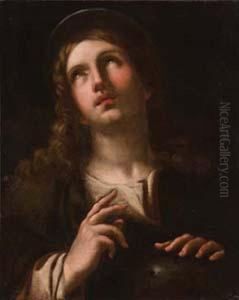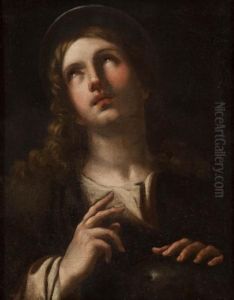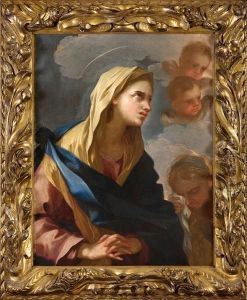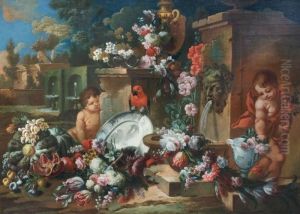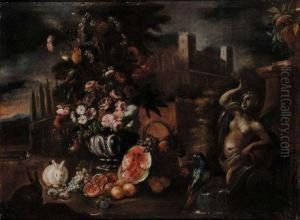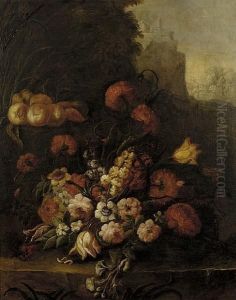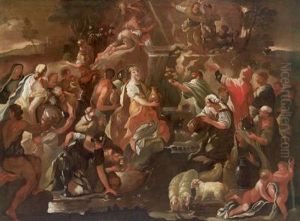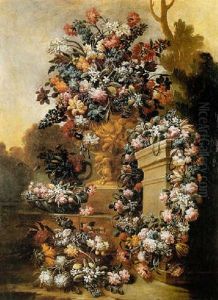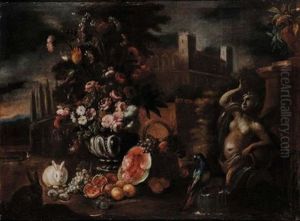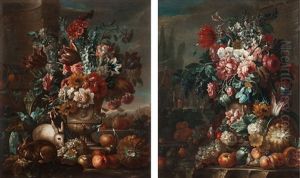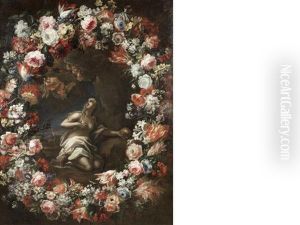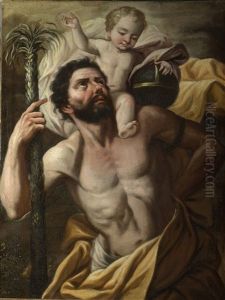Nicola Malinconico Paintings
Nicola Malinconico was an Italian painter of the Baroque period, born in 1663 in Naples, Italy, which at the time was one of the most vibrant artistic centers in Europe. Malinconico is part of the generation of Neapolitan Baroque painters who followed the lead of artists like Luca Giordano and were influenced by the dynamism and dramatic use of light typical of Caravaggio's work. His style is characterized by a robust naturalism, a strong use of chiaroscuro, and a certain emotional intensity that aligns with the Baroque spirit of the era.
Nicola began his artistic training under the tutelage of his father, Giovanni Antonio Malinconico, who was also a painter. He subsequently worked in the studio of Francesco Solimena, another prominent Neapolitan painter, who had a significant influence on Malinconico's development as an artist. Under Solimena, Nicola honed his skills in composition and the handling of color and light, which would become hallmarks of his mature work.
Malinconico's career was largely concentrated in Naples, where he received numerous commissions for religious works from churches and monastic orders. His paintings often featured biblical and mythological scenes, executed with a dynamic touch and a sense of immediacy that brought these stories to life for contemporary viewers. Some of his notable works include altarpieces and frescoes in local churches such as the San Diego all’Ospedaletto and the church of San Ferdinando.
Despite his success, Malinconico's work was sometimes overshadowed by his contemporaries, and he did not gain the same level of fame outside of Naples as some other Neapolitan artists of the time. Nevertheless, he left behind a body of work that is appreciated for its contribution to the Baroque movement in Southern Italy.
Nicola Malinconico passed away in 1721, leaving a legacy as a significant figure in the Neapolitan Baroque, whose works continue to be studied and admired for their vigorous style and emotional depth.


